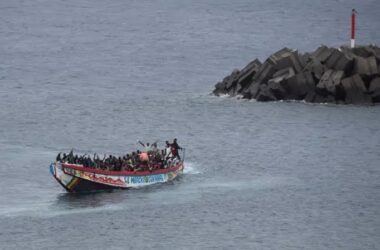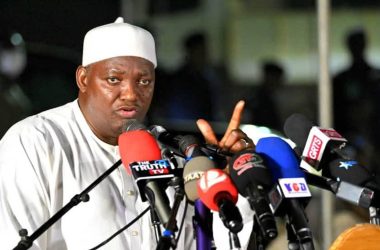By Ebrima S. Dem
Introduction
From the 6th to 19th December 2009, citizens of the world of all works of lives converge at city of hope, Hopenhagan, Denmark, for COP -15 climate conference, hoping that the leaders of the community of nations would put aside their individual national interest and face the realities of global treat to survival cause by climate change. However, as the clock ticked towards the final day of the negotiations, the whole process turned out to be sham and unfulfilled endeavors as our politicians failed to agree on principle for a Fair Ambitious and Binding (FAB) deal. The COP which was the 15th session of the parties to Kyoto protocol brought together more than 50, 000 delegates representing youth leaders, policy makers, politicians, UN agencies, and climate change experts among others to discuss the future of the planet.
Why was the participation of young people necessary at the COP?
The participation of young people in this historic conference was very crucial in the sense that as young people, we are one of the most vulnerable groups to climate change. This is because we are to live with whatever decision arrived today at this climate change conference.
Many of those negotiating might not live long enough to witness the more imminent global disaster posed by climate change, hence the question that young people ask; ‘How old will you be in 2050? please don’t bracket our future!’
What was my task at the COP?
As youth representative, my task at the COP-15 was to advice, support and work with the Gambia’s climate delegation to negotiate a fair deal needed for national development, especially a deal that put into account the voices and concerns of the young people in the country. Looking at our country’s economy and geographical location, for us, the issue of climate change is a matter of life and death; hence the need for urgent action. Therefore, every morning, our national delegation met as team to review activities of the previous day and assign new responsibilities.
My work was centered more on following side events that have special interest on young people:
Side Events
1.REDD (Reduce Emission on Deforestation and forest Degradation). In this side event, participants discussed the impact of climate change on forest degradation and the role of young people in forest degradation. The event looked at young people as victims,
perpetrators and potential agent of change in regaining the forest cover for most vulnerable communities especially in Africa. Key recommendation made for protecting the forest cover was promoting youth participation in community-driven action projects geared towards protecting the forest and forest resources.
2.EU-Africa youth forum
This side event brought together youths from Europe and Africa to discuss and share vital information on how best to forge partnership and work together in enhancing climate change mitigation. We also reviewed and renewed our commitment to support the Bali Action Plan (BAP) calling for common but differentiated responsibility for climate change.
3.Meeting with Dutch Minister for Development
Youth from various countries met the Dutch Minister to discuss on how best young people can consolidate the efforts of the policy makers on climate change mitigation and adaptation. He reiterated his support to lobby for more funds in support capacity building and climate change adaptation projects as well developing green jobs for youth.
4.African youth delegation side events
Through out the conference, African youth delegations had series of meetings geared towards complimenting and supporting the continent’s position. We also had meeting prime with the Prime Minister of Kenya, Raila Odinga, to brief on the need for Africa to remain undivided in their demand for a FAB deal. We also had series of consultative meetings with stakeholders in the climate change such as the World Bank, Commonwealth parliamentarians, etc.
Consultation and networking
During the conference, I also had the opportunity to meet a number of youth leaders from various NGOs and discussed ways to support and share best practices with youth from the Gambia. Among the organizations I met were 350.org, Tearfund, Global biodiversity
information centres, USCAN, Australian youth climate coalition, and the World Bank.
Interviews
During the Cop-15, I had series of interviews with a number of media houses such as the UN Radio in New York, Fair climate TV, Holland, and Project survival pacific media. Many were concern that the voices of Gambia’s youth are seldom heard in the international youth work despite having a lot to offer. I used the opportunity of these interviews to share vital information pertaining to the little ways in which youth in the Gambia are contributing in the global efforts to mitigating and adapting to the impact of climate change.
Plenary sessions
Since I was a party delegate (Not Observer), I had the opportunity to attend many of the plenary sessions and followed strictly the debates and negotiations processes and procedures. I also attended the final plenary leading to the final drafting of the infamous Copenhagen
accord.
What was Africa’s position at the COP?
The African group, led by the Minister of Environment of Algeria, wanted the following to be included in the negotiating text for an FAB deal:
1.The retention of the Kyoto Protocol to at least a second commitment period.
2.Keeping global warming to a temperature below 2 Centigrade or at most 1.5, putting into account historical and current responsibilities of the developed countries to climate change and enhancing the right of the developing countries to sustainable development.
3.Industrialized countries as a group must take a target to reduce their emission of more than 40% below 1990 level by the year 2020 – Note: this emission cut should be accounted for and quantified
4.Emission from deforestation and forest degradation must be reduced to zero by 2020, funded by at least US$ 35 Billions per year by developed countries.
5.Developed countries need to provide at least US$ 200 billion in public financing per year by 2020 to support climate change mitigation and adaptation in developing countries. This financing should be grants not loans.
6.Developed countries to provide technology transfer and capacity building for climate change adaptation and mitigation in developing countries.
7.That the deal should be legally binding.
Copenhagen accord-Not an FAB but a sham
After two weeks of intense negotiations, it turned out to be very embarrassing that world leaders can not provide an FAB (Fair, Ambitious and Binding) deal needed to salvage the
poor people especially those from developing countries. The infamous Copenhagen accord was just:
a) A vague commitment to keeping temperature rise below two degrees and to low emissions reduction targets
b) The non-binding declaration promises short-term finance for developing countries of $30 billion up to 2012 and $100 billion by 2020, but it is not clear that this money will be new, additional or where it will come from.
c) Deep cuts in carbon emission by both developed and developing countries but no numerical figure was agreed
d) Copenhagen green climate fund shall be established to provide financial mechanisms and support activities relating to climate change mitigation and adaptation and capacity building
e) Technology transfer will be enhanced only when guided by country-driven approach and will be based on national circumstances and priority
Lessons learnt
Though our leaders could not agree on an FAB deal, the COP-15 has really reawaken the spirit of the global citizens that climate change is a global problem which requires the concerted solution of all and sundry. The COP-15 will go down in history as one of the biggest meeting of the world citizens in a drive to finding a solution for a common problem for humanity.
My recommendation:
I believe that for Africa to remain strong against the pressures posed by the impact of climate change, the continent should focus more on adaptation and less on the medium and longterm projections of green house gas emissions.
In the Gambia, to ensure our climate resilience as a country, I would suggest that the current climate committee be revisited and made all-inclusive. That is, the committee should include all major stake holders such the young people, women, children, politicians, technocrats etc. The committee should also have a legal mandate in which it operates. We should also come up with country-driven programs that support climate change adaptation.
To ensure that the young people become a force to be reckoned with in the run up to the realization of climate resilience at the country level, I would recommend the formation of an umbrella body of youth groups involved in climate advocacy work to synergize their
efforts.
My Appreciation:
Finally, I would like to express my sincere appreciation to members of Global Unification, The Gambia for their unflinching support and dedication toward the realization of climate justice. My special thanks goes to the Project Survival-Netherlands team for funding my trip to Copenhagen, without whose support I would not have been able to attend this important conference. I would also like to say a big thanks to Mr. Pa Ousman Jarjue, UNFCCC focal person for the Gambia and Mr. Essa Khan, Director of National Disaster Management Agency, for their advice and support.
Ebrima S. Dem is the National Representative of Global Unification, Gambia Chapter.
He was a youth delegate at the COP-15 in Copehagen.
Trending :
- 5 hours ago
- The Back-Way Syndrome – A Possible Jinack Connection
- 5 hours ago
- Barrow Describes Mushrooming Political Groups As ‘Briefcase Parties’
- 5 hours ago
- NPP Defied All Odds To Become Formidable Party, Says Barrow At Commemorative Rally
- 1 day ago
- Death Toll In Jinack Shipwreck Rises
- 2 days ago
- Dismissed Officials Resurface As Shake-Up Raises Accountability Questions




